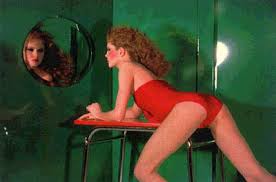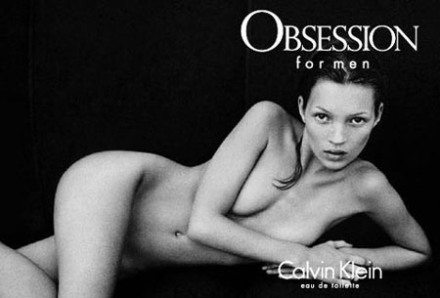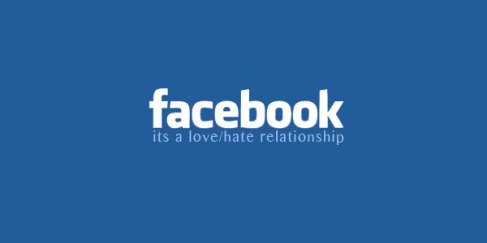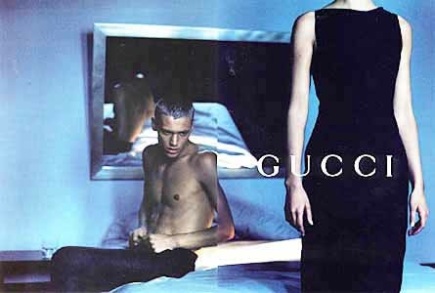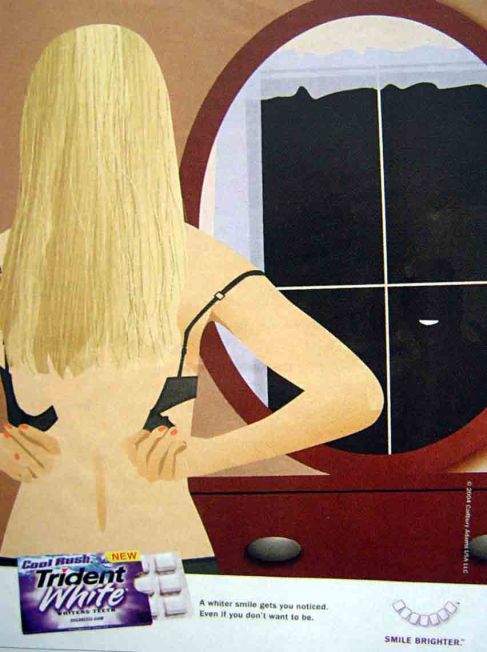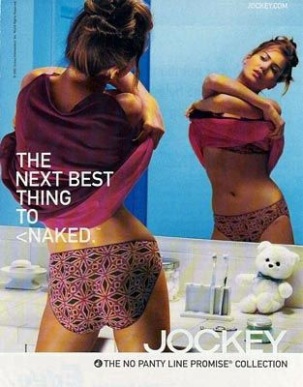“Male fantasies, male fantasies, is everything run by male fantasies? Up on a pedestal or down on your knees, it’s all a male fantasy: that you’re strong enough to take what they dish out, or else too weak to do anything about it. Even pretending you aren’t catering to male fantasies is a male fantasy: pretending you’re unseen, pretending you have a life of your own, that you can wash your feet and comb your hair unconscious of the ever-present watcher peering through the keyhole, peering through the keyhole in your own head, if nowhere else. You are a woman with a man inside watching a woman. You are your own voyeur.”
| — |
Margaret Atwood, The Robber Bride |
The above quote certainly defines the essence of the male gaze. The word ‘gaze’ categorizes many different ways of looking and viewing (especially in terms of consuming media, advertisements, etc.), but essentially it can refer to who exactly is doing the ‘gazing.’ The male gaze is an acceptable platform on appreciating ‘everything’ that a woman is. It’s seen as the only way women can be looked at with worth or value. It is how women are viewed in modes of sexualization and objectification. A woman’s self-worth is predicated in how sexually desirable she is to the male. As much as it angers me to continue to type about the ways women are situated under the male gaze, I’ve come to learn throughout my consumption of film and media in my daily life to conclude that this supposed ‘worth’ equals ‘success’ for a woman.
According to John Berger, “To be born a woman has been to be born, within an allotted and confined space, into keeping of men” (46). Written in 1972, Berger explains the duality of the male gaze in his article “Ways of Seeing.” Berger extends the male gaze from its origin in European paintings.There is an ideology at play, where women are there solely for the men’s gage and this provides satisfaction for them. Berger says “…….the essential way of seeing women, the essential use to which their images are put, has not changed. The ‘ideal’ spectator is always assumed to be male and the image of the woman is designed to flatter him” (63). This is an engendered idea, as well as a power issue. Who holds the power to someone else? How is the power maintained? A nude is ONLY a nude if it fits the idealizations and fantasies categorized in the male gaze. The article assumes that white males are the main/primary audience; because of this, women are subjected to scrutiny and criticism if they do not fix or hold a candle to the survey of the male gaze. John Berger emphasizes a problem that is currently prevalent in the contexts of mainstream media today. Images of women are depicted in highly sexualized, suggestive, unrealistic, and demeaning matters. We are exposed to it every day. We see it, but are we conscious of it? Or is it so ingrained that we do not realize this oppression?
“There is power in looking.”- Bell Hooks.
The Bell Hooks reading certainly challenges Bergers’. As a black woman spectator, Bell Hooks comes to actualize her point of view by being unable to identify within the survey of the male gaze. This aspect of surveying refers to the traditional white female that is presented in film. It is within cinema where the oppositional gaze is utilized. She first begins her argument from a historical perspective, where she discusses how, as slaves, African Americans were denied the ability to look. The “oppositional gaze” is the way of looking and has been a tenet of rebellion for blacks throughout history. “That all attempts to repress our/black peoples’ right to gaze had produced in us an overwhelming longing to look, a rebellious desire, an oppositional gaze” (Hooks, 116). This provided a foundation for their internal “rebellious desire” to become lit and in turn, came to protest such repression under the male gaze. The oppositional gaze challenged an existence under male gaze as well. “Even in the worse circumstances of domination, the ability to manipulate one’s gaze in the face of structures of domination that would contain, it opens up the possibility of agency.” (Hooks, 116)
Ignoring the racism and the sexism is how a black woman can identify as a spectator. As a result, a type of bond or identification with the women under survey would form. Here is where I discovered that this agency relates to some form of selective consciousness. Black women can alter and change their way of viewing a film in order to grasp it as entertainment. It is all about choice. In choosing not to look too deeply into the context, they are deliberately remaining unaware of repressive and demeaning themes contained in the male gaze. There is a consciousness of how we assess the established representation onscreen.
There are reasons we need feminism. Sexism is one of them. As viewers of cinema and consumers of different forms of media, it is without a doubt that sexism has been so internalized in our society and how we consume it. Sexism is a problem because it dehumanizes the character of another. Gender notions and imposed gender roles are socially constructed. They are both a result of prejudice and the way society looks at a designated group of people. In this case, women are perpetually oppressed. Based on gender and the inherent male gaze, women are automatically assigned characteristics, strengths and weaknesses, etc.
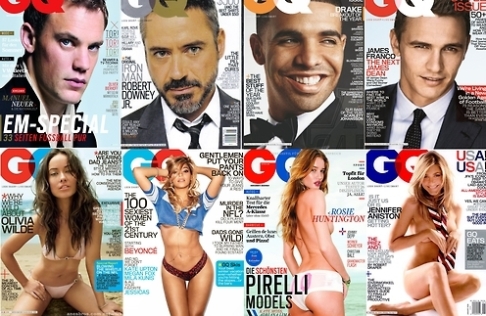
These are images of the covers of various issues of GQ Magazine. This magazine encompasses a perfect illustration of how our society comes to view women, especially those who work in the film and music industry. These people invoke some type of influence on the masses; therefore this is very important to realize the connection between sexuality, female talent, and beauty. It is so deeply rooted in a system of patriarchy and oppression, that we often appreciate these famous women on the basis of their physical appearance.
If you have a problem (and I believe every woman should be) with the way that you’re objectified, realize that feminine standards of beauty are racist, unfair, ridiculous, and unrealistic. It is vital and encouraged to maintain self-confidence and to refuse in not adhering to those standards of the male gaze. But the insecurity and self-doubt that is bred because of what we as females are subjected to is not to be invalidated. As long as we realize it and our conscious of it, that is a good enough start in challenging it.
http://www.huffingtonpost.com/2014/02/20/olivia-wilde-women-and-media_n_4825851.html
^ Bravo for you, Olivia Wilde.
Link to my twitter: https://twitter.com/Gaddi_K
Bibliography:
Berger, John. Ways of Seeing. Penguin, 1972. Print.
Hooks, Bell. “The Oppositional Gaze: Black Female Spectators” Boston. South End Press, 1992: 115-131





